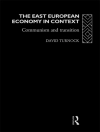Abortion in the Weimar Republic is a compelling subject since it provoked public debates and campaigns of an intensity rarely matched elsewhere. It proved so explosive because populationist, ecclesiastical and political concerns were heightened by cultural anxieties of a modernity in crisis. Based on an exceptionally rich source material (e.g., criminal court cases, doctors’ case books, personal diaries, feature films, plays and literary works), this study explores different attitudes and experiences of those women who sought to terminate an unwanted pregnancy and those who helped or hindered them. It analyzes the dichotomy between medical theory and practice, and questions common assumptions, i.e. that abortion was “a necessary evil, ” which needed strict regulation and medical control; or that all back-street abortions were dangerous and bad. Above all, the book reveals women’s own voices, frequently contradictory and ambiguous: having internalized medical ideas they often also adhered to older notions of reproduction which opposed scientific approaches.
Inhoudsopgave
List of Plates
Preface
Chapter 1. Towards a Cultural History of Abortion
Historical perspectives
Cultures of abortion in Weimar Germany
Chapter 2. Cultural Representation: Abortion on Stage, Screen and in Fiction
Abortion in the movies
The novel Gilgi and the female reader and spectator
Socialist plays and novels
Abortion pathologized
Chapter 3. Medical Termination of Pregnancy: Theory and Practice
The case of Dr Hartmann
Abortion in the medical discourse
Divided opinion within the medical profession
Medical blunders and legal practice
The case of Dr Hope Bridges Adams Lehmann
Financial considerations
Medical attitude and medical power
Women’s experience
Chapter 4. Abortion in the Marketplace: Lay Practitioners and Doctors Compete
The anti-quackery campaign
Self-induced abortions
Lay abortionists
Gender and the abortionist
The careers of ‘wise women’
The safety record of quack abortionists
Methods and money
Class differences and shared culture
Chapter 5. Women’s Own Voices: Female Perceptions of Abortion
The construction of the criminal in abortion trials
The experience of abortion
‘Blocked menses’ (Blutstockung) as a popular lay concept
Advertising abortifacients
Women’s sensory perceptions
Chapter 6. Abortion as an Everyday Experience in Village Life: A Case Study from Hesse
Rural communities in decline
Female communication networks
Reproductive Eigensinn
Rebellious women and men
Relations between the sexes
The career of a successful abortionist
Denunciation
Conclusions
Chapter 7. Abortion in Early Twentieth-century Germany: Continuity and Change
Gender roles and gender relations
The blurring of boundaries
Continuity and change
Abortion in Nazi Germany
Continuity with Imperial Germany
Abbreviations
Notes
Bibliography
Index
Over de auteur
Cornelie Usborne is Professor emerita of History at Roehampton University and Senior Research Fellow, Institute of Historical Research, London. She has published widely on the history of women, reproduction, birth control, sexuality and medicine in Modern Germany. She is the author of The Politics of the Body in Weimar Germany. Women¹s Reproductive Rights and Duties (London: Macmillan and Ann Arbor: University of Michigan Press, 1992) and she edited, amongst others, `Picturing the Past’, the special issue of the journal Cultural and Social History (with Charlotte Behr and Sabine Wieber, December 2010); Cultural Approaches to the History of Medicine. Mediating Medicine in Early Modern and Modern Europe (with Willem de Blécourt, London: Palgrave Macmillan, 2004) and Gender and Crime in Modern Europe (edited with Margaret L.Arnot, London: UCL Press, 1999).












